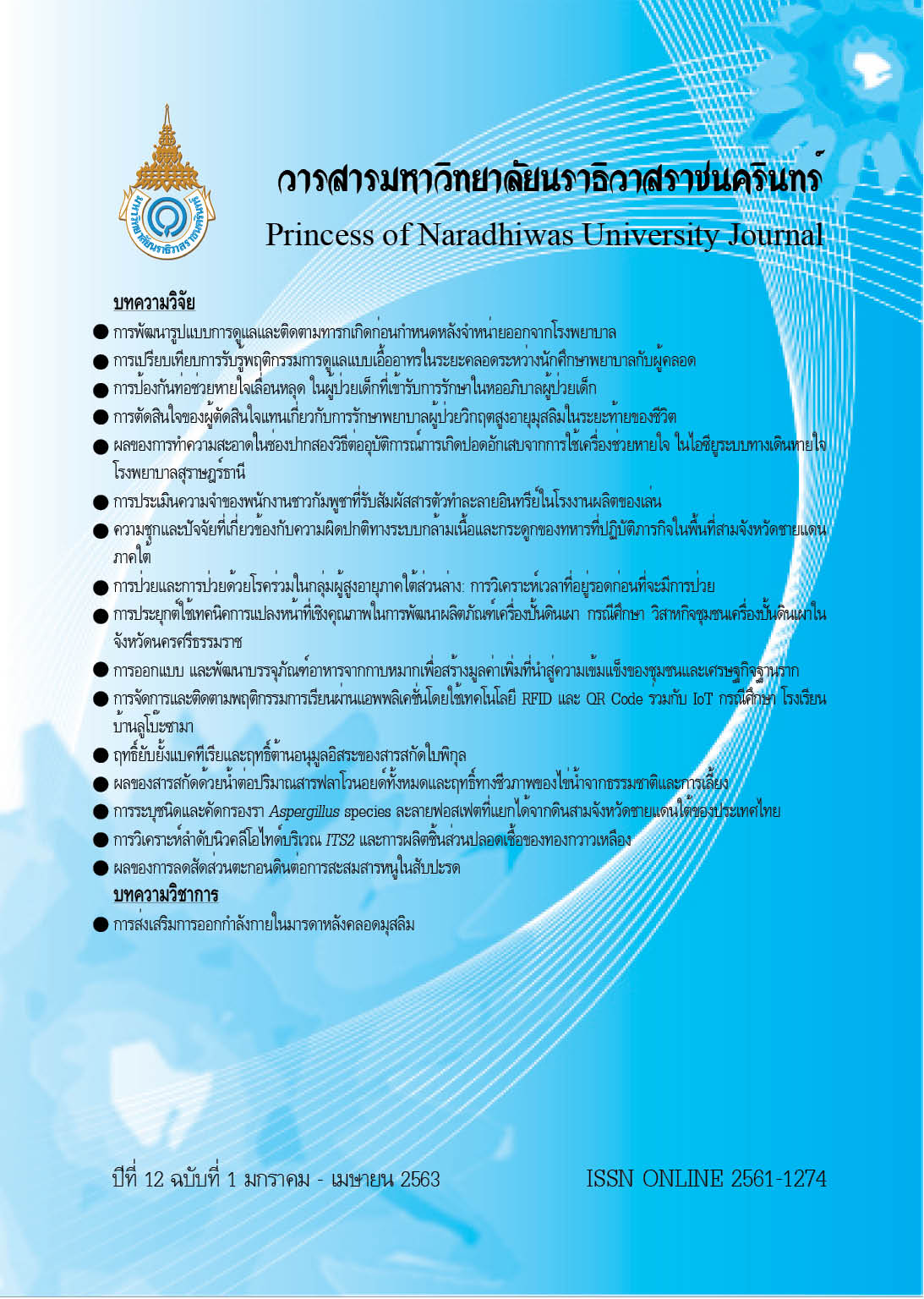Caring Behaviors as Perceived by Both Nursing Students and Pregnant Women during the Stage of Labor: A Comparison Study
Keywords:
Caring Behavior, Stage of Labor, Perception, Nursing Students, Pregnant WomenAbstract
This research aimed to: 1) study caring behaviors of nursing students as perceived by themselves,
and pregnant women, and 2) compare the perceptions between the nursing students, and the pregnant
women. The sample consisted of 72 third-years nursing students, and 72 pregnant women. The research
instrument was aquestionnaire about caring behaviors of nursing students during the stage of labor, as perceived by both the nursing students, and the pregnant women. Its reliability was tested using Cronbach’s
alpha coefficient, yielding values of .96 and .97, respectively. The data were analyzed by using percentage,
mean, standard deviation, and t-test.
The research found that: 1) the level of caring behavior of the nursing students as perceived by the pregnant women was at a very high level ( = 4.70, S.D.=.32) , and the level of caring behavior of the nursing students as perceived by themselves was at a high level ( = 4.35, S.D. = .40) , and2) the caring behaviors perception in perinatal period, according to the nursing students, was not different from the pregnant women’s perception
References
Bauer, J. A. (1990). Caring as the central focus in nursing curriculum development. National League for Nursing, 41(2), 225-266.
Dick-Read G. (1984). Childbirth without Fear (5th ed.). New York: Harper & Row.
Ericksson, K. (1994). Theory of caring as health. In Gaut, D.A., &Boykin, A (Eds.), Caring as healing: renewal through hope. New York: National League forNursing. (pp. 3-20).
Kosolchuenvijit, J. (2008). A Development of The Instructional Model Through Integrating Buddhist Concepts to
Nurture Caring Behaviors in Nursing Students. Dissertation, Ed.D. (Curriculum Research and Development). Master thesis. Srinakarinwirot University. (in Thai)
Kosolchuenvijit J. (2013).Caring: CentralFocus of Humanistic Care. Journal of Boromarajonani College of Nursing, Bangkok, 29(2), 134-141.
Keawwanarat, A. (2005). Caring Behavior of Nursing Students in Clinical Nursing Practice. Journal of Phrapokklao Nursing College, 29(1), 56-66.
Iravani, M., Zarean, E., Janghorbani, M., & Bahrami, M. (2015). Women’s needs and expectations during normal labor and delivery. Journal of Education and Health Promotion, 4(6). doi: 10.4103/ 2277-9531.151885
Pancharean, S., & Sirikul, S. (2010). Caring Behavior of Nursing Students in Clinical Nursing Practice.Journal of Nursing and Education, 3(3), 64-74.
Phadthong, N. (2015). Caring relationship of instructors perceived by nursing students and caring behavior of the nursing students during a practicum perceived by clients. Journal of Health Science Research,9(2), 59-63.
Ratanagomon, P., & Surinaporn, M. (2010). Caring Behavior of Nursing Students, Boromarajonani College of Nursing, Chainat. Article. (in Thai)
Roykulcharean, W. (2007). Practice in Nursing: Humanized Care. Thai Journal of Nursing Council, 22(3), 5-8.
Watson, J. (1999). Nursing human science and human care: The theory o fnursing. Boston: National League for Nursing.
Watson, J. (2008). Nursing: the philosophy and science of caring. Boulder, Cololado: University Press of Cololado.




